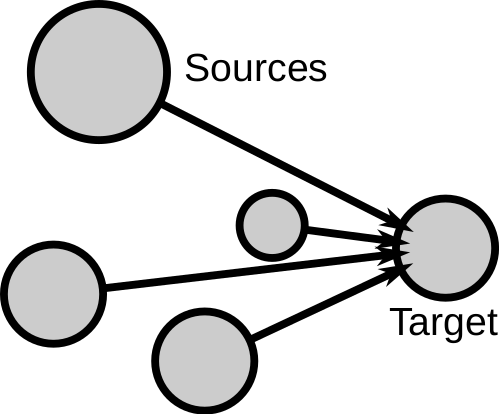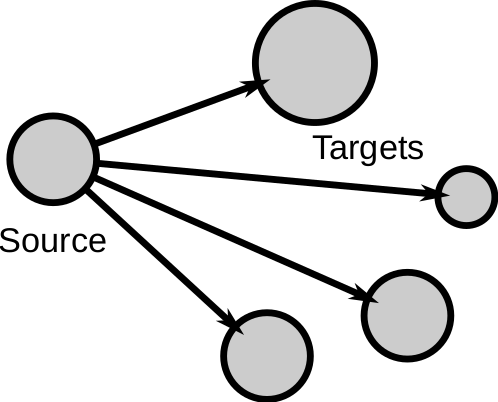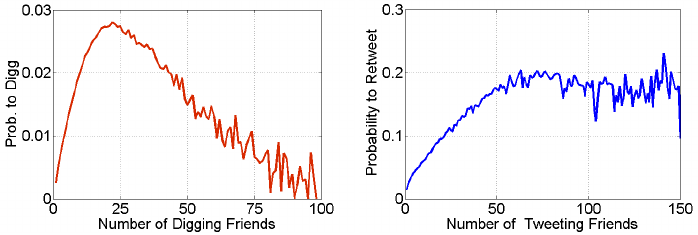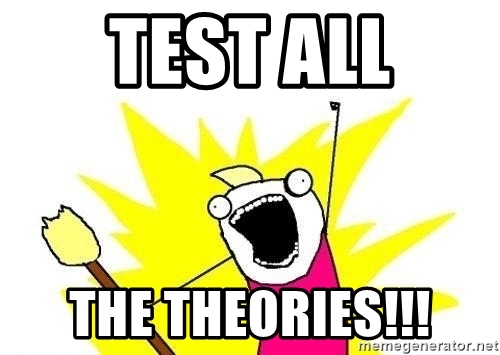class: center, middle, inverse, title-slide .title[ # Social Impact Theory ] .author[ ### David Garcia <br><br> <em>ETH Zurich</em> ] .date[ ### Social Data Science ] --- layout: true <div class="my-footer"><span>David Garcia - Social Data Science - ETH Zurich</span></div> --- # What is Social Impact? <div style="float:right"> <img src="Intervention.jpg" alt="How I Met your Mother intervention" width="350px"/> </div> > **Social Impact:** Changes in behavior that occur in an individual as a result of presence or actions of other individuals Examples of behavior: subjective feelings, motives, emotions, thoughts, customs, decisions... The presence or actions of others can be: - *real:* the physical presence of others - *implied:* expected or manipulated presence, e.g. a cardboard policeman - *imagined:* mental representation of others, e.g. supporters of your team when watching TV sports --- # The case of conformity .pull-left[**Pair up and discuss:** - What do you expect from one person entering an elevator with two people inside looking away from the door? - What would be different if there is only one person inside? - And if there are four people inside the same way? - What would be different if two people enter together and four are inside looking away? ] .pull-right[  ] --- # Asch's conformity experiments  Elevator experiment in Candid Camera (1962) --- # Social Impact Theory (Bibb Latané) <center>  </center> --- # Social forces in SIT In [Social Impact Theory](http://psycnet.apa.org/psycinfo/1982-01296-001), social impact is driven by three forces in the following equation: `$$I = f (S × i × N)$$` - `\(I\)` is the magnitude of social impact - `\(f()\)` is a multiplicative function of three conditions of the impacting situation: 1. **Strength** `\(S\)` or power of the source(s) 2. **Immediacy** `\(i\)` or proximity of the source(s) 3. **Number of sources** `\(N\)` or number of people --- # N: Number of sources <div style="float:right"> <img src="SIT1.png" alt="Conformity experiment result." width="400px"/> </div> </br> </br> SIT predicts that impact should grow with N. Asch's conformity experiments test this hypothesis, where: - `\(I\)`: increase in percentage of wrong answers given by students that were experiment subjects - `\(N\)`: controlled number of confederates The result: the percentage of wrong answers grows with the amount of sources. --- # The Psychosocial Law <div style="float:right"> <img src="SIT1.png" alt="Conformity experiment result." width="400px"/> </div> > **The Psychosocial Law:** The extent of social impact grows sublinearly with the number of sources This can be translated to the equation: `$$I \propto N^t, t < 1$$` This means that the hundredth source has less additional effect than the first (*diminishing returns*). The equation is what is called a power-law with exponent `\(t\)`. In the case of conformity among high school students, `\(t\)` was estimated to be 0.48. --- <div style="float:right"> <img src="SIT2.png" alt="Anxiety experiment result." width="450px"/> </div> # S: Strength of sources The strength in SIT is the perceived social status, power, wealth, importance, or intensity of the sources. Poem experiment example: - `\(I\)`: anxiety of the students recorded with a dial they use to measure their own anxiety - `\(N\)`: number of people in the audience - `\(S\)`: audience is middle-aged (strong) or teenagers (weak) **Multiplicative effect:** The impact of the number of sources grows faster when they are strong than when they are weak --- # i: Immediacy of sources <div style="float:right"> <img src="SIT3.png" alt="Newspaper experiment result." width="400px"/> </div> Immediacy is defined as the proximity between the sources and the target of social impact. Immediacy can be spatial, temporal, or social. The effect of immediacy in media bias experiments: - `\(I\)`: number of lines used to report the news by the students - `\(N\)`: number of people reported dead in the accident - `\(i\)`: is the distance to the place of the accident (close vs far conditions) Results: The growth of impact with N was steeper for the close condition --- # Division of impact <center>  </center> --- # Division of impact Social Impact Theory also covers situations with one source but when when targets are not alone. It formulates the impact `\(I\)` on **each** target as: `$$I = f\left(\frac{1}{S × i × N}\right)$$` Where the terms are: - `\(S\)` strength of the targets: the stronger the targets, the harder to impact each one. - `\(i\)` immediacy between the targets: the closer or more connected the targets, the harder to impact each one. - `\(N\)` the more the targets in the group, the harder to impact each one. - `\(f()\)` is a multiplicative function with negative exponents for the terms. --- <div style="float:right"> <img src="SIT4.png" alt="Results of tipping study." width="450px"/> </div> # Division of impact The most widely studied divisor of impact is group size (N). An observational study finds the effect for the case of restaurant tips: - `\(I\)`: Percentage of tip (assumed evenly shared among customers) - `\(N\)`: number of customers at the table Result: `\(I\)` decreases as `\(N\)` increases. The more people sitting at the same table, the less obliged each one feels to leave a tip. The resulting shape of I as a function of N is well fitted by a negative power of N. --- # Online social impact The psychosocial law can be observed in various social media: <center>  </center> Probability to Digg or Retweet as a function of number of friends who already did so. Taken from Kristina Lerman's review ["Information Is Not a Virus, and Other Consequences of Human Cognitive Limits"](http://www.mdpi.com/1999-5903/8/2/21). --- <center>  </center>